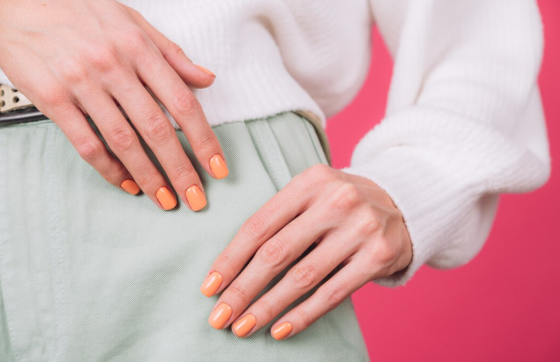In Greece, fashion is not a fashion — it is a thread, connecting myth to memory, stone to silk, and gods to garments. From olive-encumbered hillsides to marble-paved runways, Greek style is less about apparel and more approximately storytelling.
The First Runway Was Made of Marble
Long before Paris, Milan, or New York, there were columns, choruses, and chitons. Greek fashion didn’t originate in ateliers — it was born under open skies, in amphitheaters where mythology was dressed in fabric.
Unlike the fitted, tailored clothing of other ancient civilizations, the Greeks permitted the cloth to go with the flow. Clothes weren’t reduced to match the frame; they have been allowed to bounce around it. The body was sacred. The fabric? A frame.
A single linen rectangle, pinned at the shoulder, transformed a farmer into a citizen, a woman into a muse. A golden belt could elevate a simple woolen peplos into something divine. This wasn’t just modesty or comfort — it was philosophy worn on skin.
The Fabric of Myth: When Fashion Meets the Divine
In no other culture is fashion so tangled with mythology. Athena, goddess of wisdom, was also a weaver. Hera’s robes shimmered with clouds. Aphrodite wore little, but what she did wear had the texture of seafoam.
This mythological influence did more than define divine wardrobes — it shaped the Greek approach to beauty itself. Greek fashion saw no divide between mortal and immortal. Clothing was not armor to hide flaws; it was drapery to expose truth. Elegance was honesty.
Even today, this belief persists. To wear Greek-inspired fashion is to channel something ancient — an echo of Olympus, stitched in silk.
Not Just Ancient History: Fashion That Refuses to Die
Many cultures shed their ancient dress with the sweep of modernization. But Greece, ever defiant, allowed its fashion to evolve, not vanish.
Over the centuries, invaders have here and gone. The Romans added togas, the Ottomans delivered embroidery, and the Venetians introduced velvet. But the Greek aesthetic bent without breaking. On remote islands, women wore costumes that blended Byzantine icons with mountain practicality. In the north, shepherds wore pleated kilts (fustanella) that whispered the sound of revolution.
To this day, folk costumes aren’t relics hidden in museums — they’re living, breathing traditions, still worn at weddings, festivals, and national parades.
A New Olympus: The Rise of the Modern Greek Designer
Modern Greek designers aren’t trying to copy Paris. They’re building a new Olympus — one made of local fabrics, ancient symbols, and fearless cuts. They know the past is powerful. But they also know it can’t hold them back.
Mary Katrantzou: The Architect of Prints
With digitally engineered styles and complex color narratives, she made style into a kaleidoscope. But beneath the futuristic surface lies the soul of Greek symmetry — geometric order, mathematical elegance, and storytelling through pattern.
Zeus+Dione: When Gods Wear Linen
This label doesn’t just make clothing — it revives endangered crafts. Their collections use handmade silk from Soufli, handwoven textiles from Epirus, and embroidery from Crete. Every garment is both fashion and preservation.
Dimitris Petrou, Celia Kritharioti, and Yiorgos Eleftheriades
These names don’t dominate global headlines — yet. But in Athens and beyond, they create couture that marries classical precision with modern silhouettes. Their models don’t walk; they glide, like statues brought to life.
Athens: Where Concrete Meets Couture
Athens is no longer just a city of ruins — it’s a runway draped in contradiction. Graffiti-covered buildings sit beside neoclassical cafes. Vintage Levi’s meet linen tunics. In the chaos of its streets, Greek fashion pulses with raw creativity.
Concept stores like Parthenis or The Greek Designers Store don’t just sell clothes — they curate identity. Designers are turning old workshops into slow-fashion hubs. Models pose among ruins not as irony, but as inheritance.
Here, fashion doesn’t ask for your attention. It earns it — with integrity, texture, and a story in every stitch.
The Philosophy of Fabric: Why Greek Fashion Feels Different
Greek fashion is less about what’s “in” and more about what’s real. It’s not built around seasonal trends, but around the human form, the local land, and the slow, deliberate work of hands. There are three invisible threads in every Greek garment:
- Time – Not rushed. Fabrics age like wine, patterns reappear across decades, and garments are meant to last.
- Place – The Aegean blue, the Cycladic white, the earthy reds of mainland Greece — color palettes aren’t chosen, they’re absorbed from the landscape.
- Myth – Every piece tells a story. Even a simple wrap dress echoes the folds of a peplos.
Street Style, Island Style, Aegean Minimalism
Greece is a country of contrasts. The equal woman who wears an embroidered people get dressed in the village might wear a minimalist ivory kaftan in Santorini. On the streets of Thessaloniki, you’ll locate Gen Z creatives mixing conventional patterns with shoes and techwear.
But throughout areas and generations, 3 standards undergo:
- Comfort with elegance: Soft fabrics that breathe, draped to move.
- Effortless layering: A headband becomes a shawl, a l will become a belt — function will become flair.
- Natural beauty: Leather, cotton, silk, and wool dominate. Plastics and synthetics feel out of place.
There’s a reason Aegean resortwear brands like Ancient Kallos and Devotion Twins are global summer staples. They aren’t just clothing brands — they’re mood boards of sunlight and sea breeze.
Greek Fashion and Sustainability: Not a Trend, a Tradition
Before the world started panicking about fast fashion, Greece was already practicing slow fashion by necessity.
In the villages of the Peloponnese or the islands of the Dodecanese, grandmothers still weave textiles by hand. They dye wool with the use of onion skins, walnut shells, and wild herbs. Every meter of fabric takes days, sometimes weeks. And it’s used with reverence.
This ancestral approach to clothing is now being reclaimed by young designers. They see sustainability not as marketing, but as ethics. Brands like 2WO+1NE=2 and MI-RŌ produce limited runs, prioritize natural materials, and design with zero waste in mind.
In Greek fashion, nothing is throwaway — not time, not fabric, not meaning.
The Future of Greek Fashion: Wearing Identity Boldly
So, where does Greek fashion go from here?
It’s not chasing global trends — it’s leading a quiet revolution. One wherein identification is worn with pleasure, where fashion is crafted slowly, and wherein style is deeply human.
You’ll see more global collaborations, greater concept stores that merge fashion with artwork, and more shows on seashores, rooftops, and ancient amphitheaters.
Greek fashion isn’t loud — it whispers. But those whispers have weight.
Final Stitch: Why the World Needs Greek Fashion
In a global world wherein rapid fashion often feels soulless, Greek style offers a counterpoint — a soul stitched into each seam.
It reminds us that fashion isn’t simply what we wear — it’s what we carry. History. Myth. Land. Craft. Confidence.
To wear Greek style is to drape yourself no longer just in beauty, but in meaning.
Stay in touch to get more updates & alerts on BaddiehubX! Thank you



